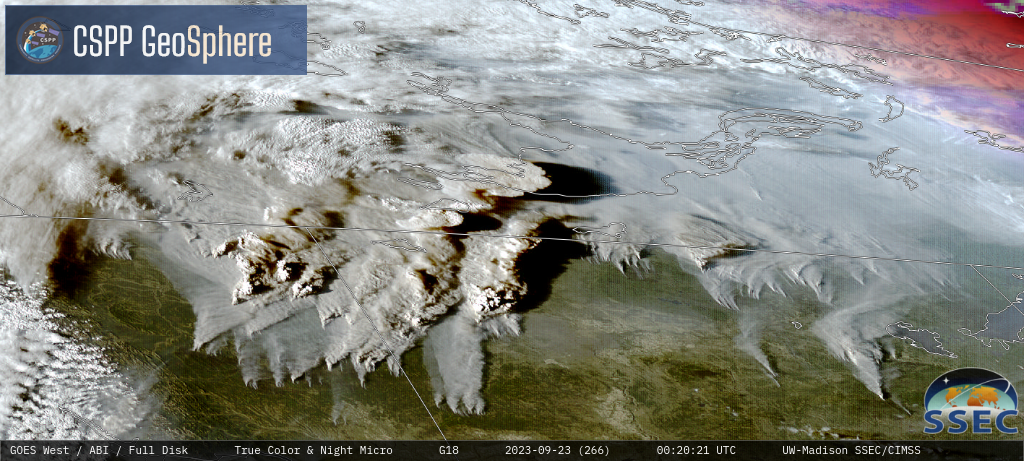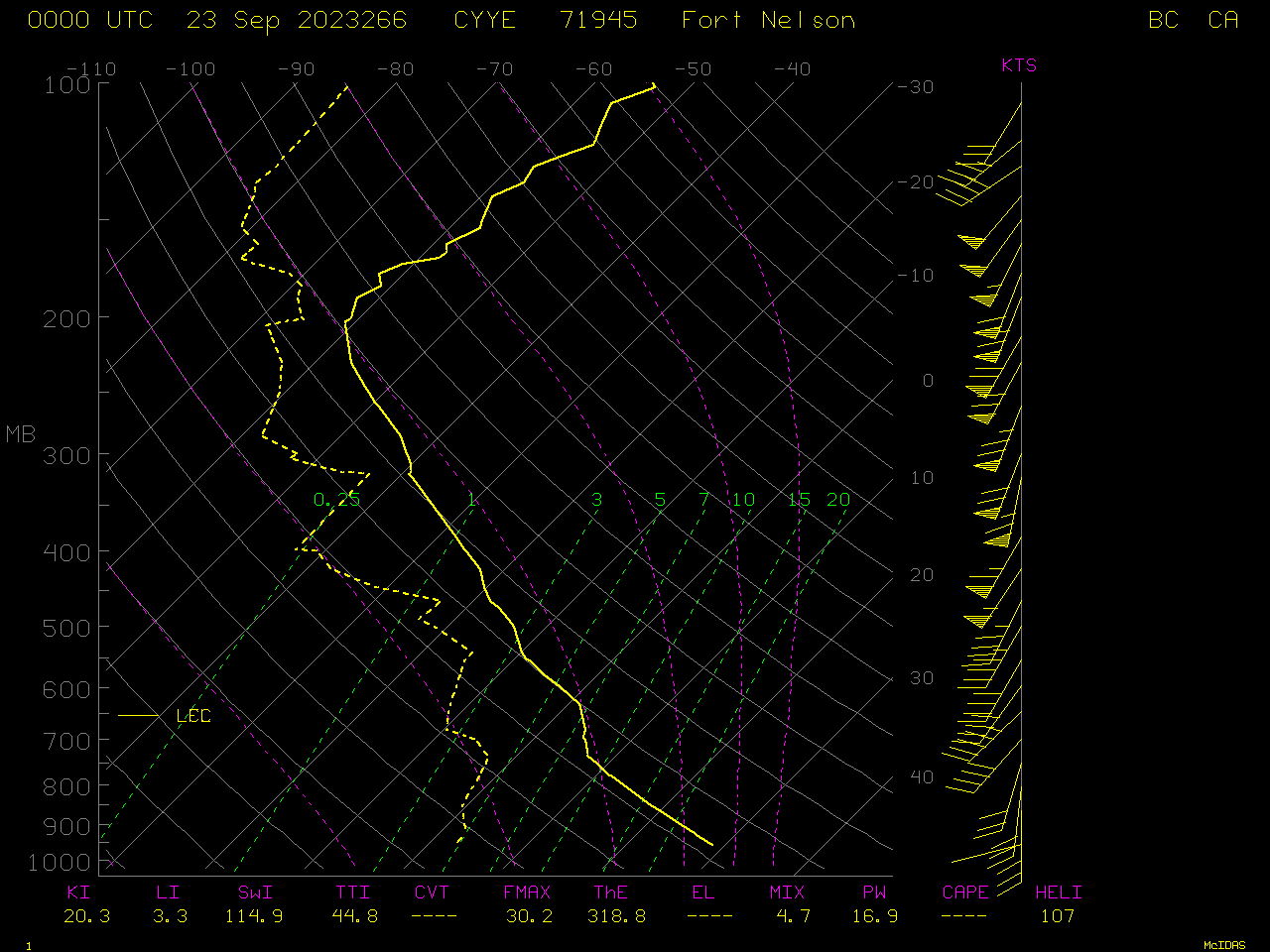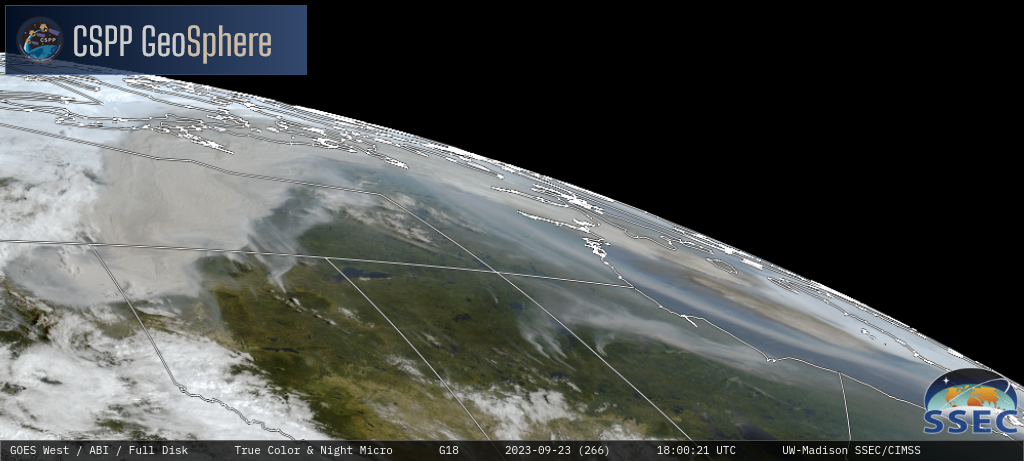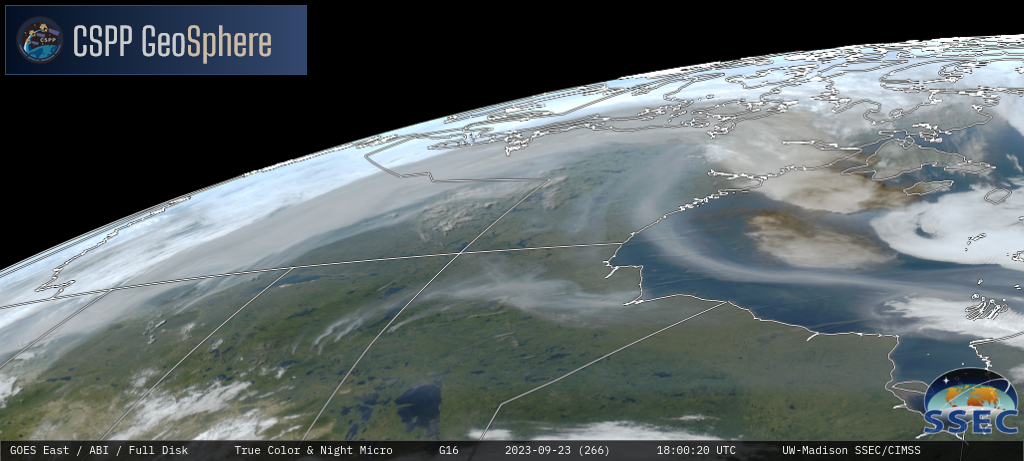Wildfires in British Columbia and Alberta produce numerous pyrocumulonimbus clouds
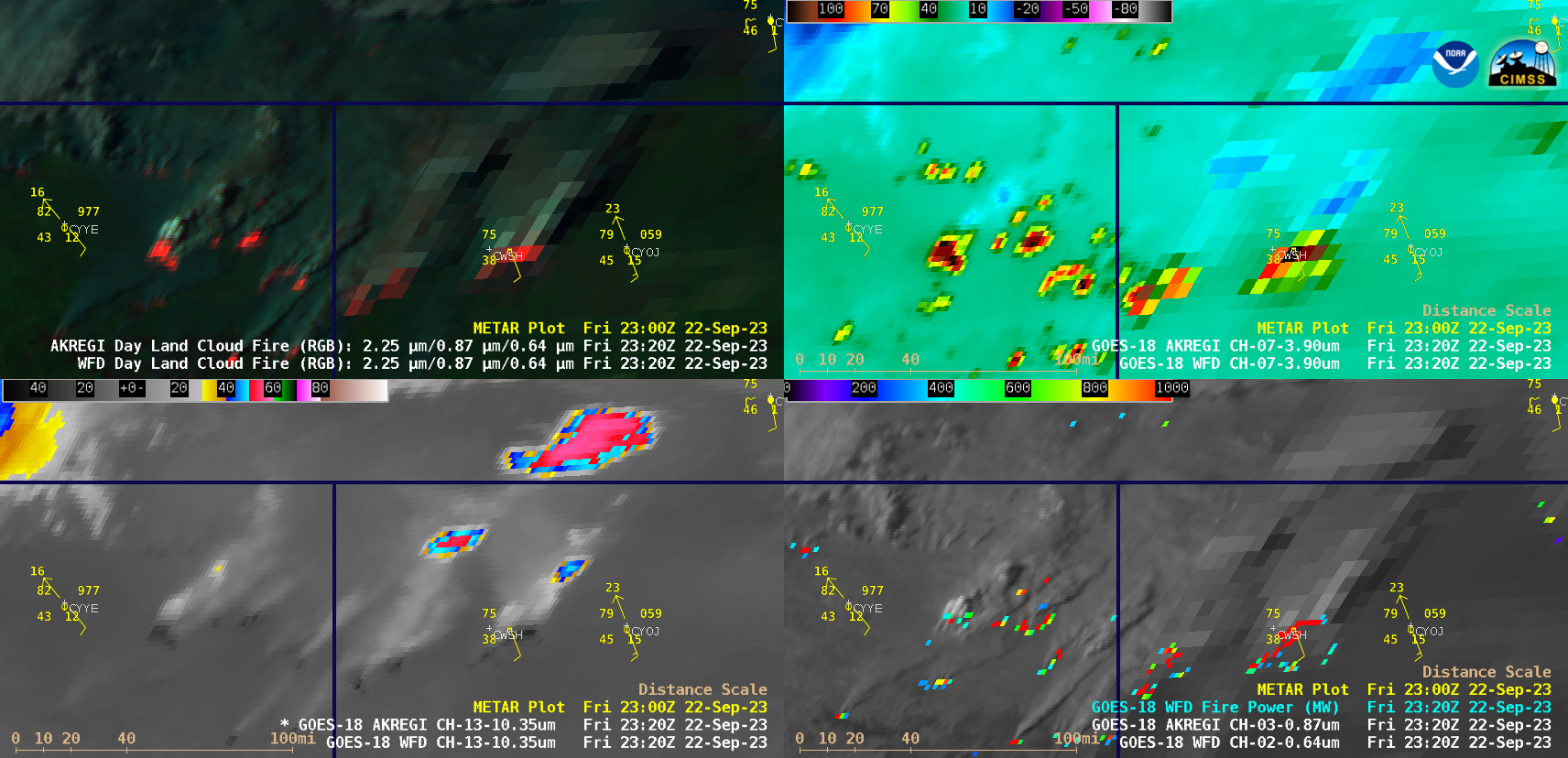
GOES-18 Day Land Cloud Fire RGB (top left), Shortwave Infrared (3.9 µm, top right), “Clean” Infrared Window (10.3 µm, bottom left) and “Red” Visible (0.64 µm) + Fire Power derived product (bottom right), from 1750 UTC on 22 September to 0500 UTC on 23 September [click to play animated GIF | MP4]
True Color RGB images from the CSPP GeoSphere site (below) displayed the BC/AB pyroCb development, as well as widespread dense smoke from the many wildfires across the region.
A longer animation of GOES-18 Infrared images covering a larger area (below) showed that while two of the largest BC fires produced 1 to 4 pyroCb clouds each — pyroCb clouds are defined as having cloud-top 10.3 µm infrared brightness temperatures of -40ºC and colder, shades of blue — one of the two largest AB fires produced an amazing string of 7 pyroCb clouds (between 2300 UTC on 22 September and 0800 UTC on 23 September). About 100 miles downstream (northeast) of that prolific pyroCb-producing AB wildfire, smoke reduced the surface visibility to 1/2 mile for several hours at Hay River (CYHY) in the Northwest Territories.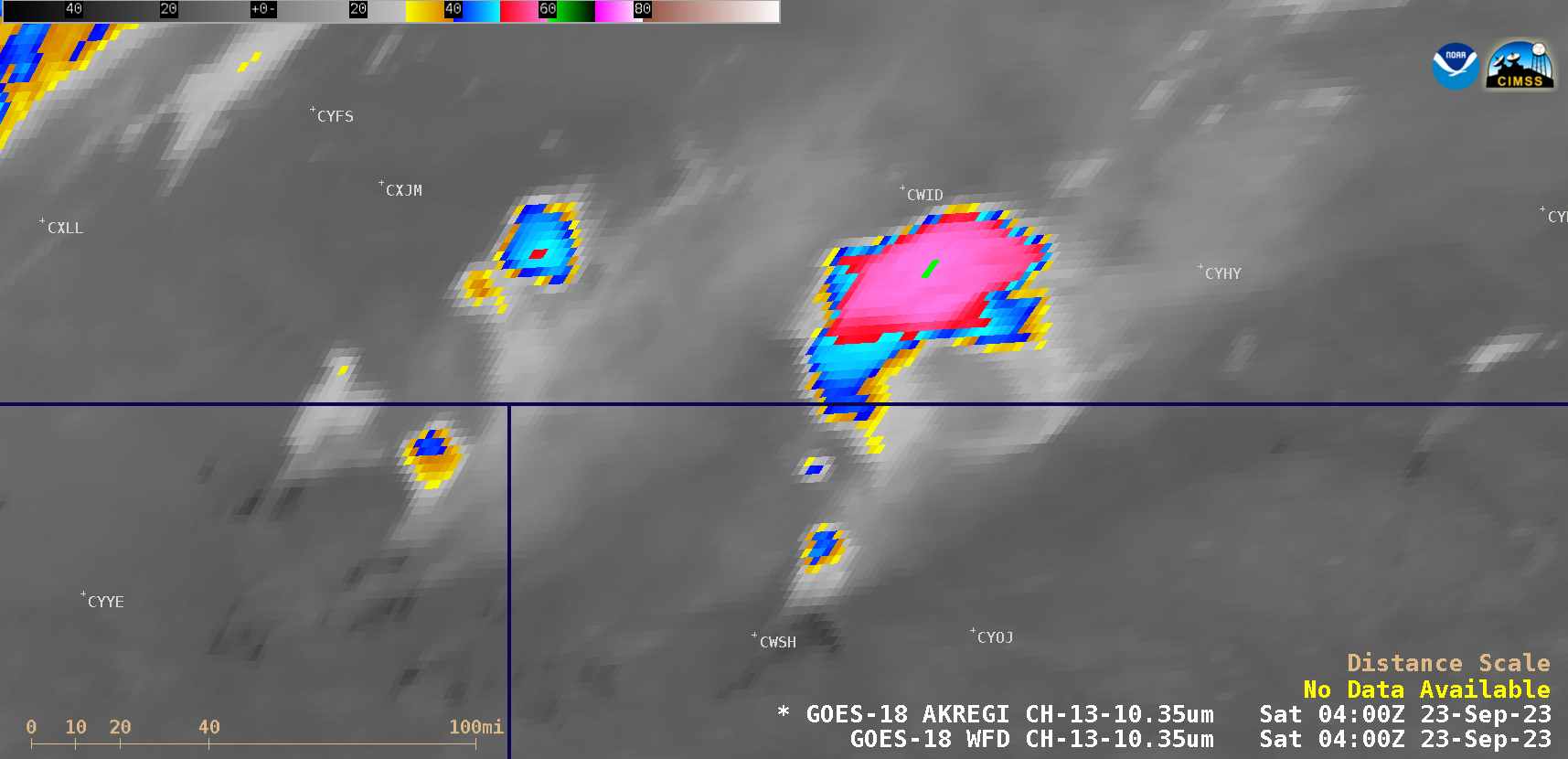
GOES-18 “Clean” Infrared Window (10.3 µm) images, from 2030 UTC on 22 September to 1000 UTC on 23 September [click to play animated GIF | MP4]


